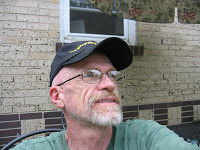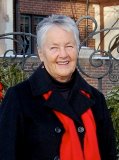Birds, by Pat Gourley
I attended the local Women’s March on Saturday (1/20/2018) here in Denver. It was an extremely exhilarating event. I have not felt the same empowering and invigorating feeling since some of the earlier Gay Pride demonstrations back when we called them marches and not parades. Yesterday’s Women’s March, estimated by the Denver Post to be 50,000+ strong, most probably had more openly queer folk in attendance than the Pride Marches of the late 1970’s. As discouraging as things seem to be at times today we really are winning the revolution though considerable work and diligence on our part remains so as not to lose any ground.
In keeping with the spirit of powerful women so openly on display yesterday I’d like to acknowledge the work of the great pioneering environmentalist and semi-closeted lesbian Rachel Carson. Her 1962 book Silent Spring is often credited with kick-starting the modern environmental movement. In thinking about today’s topic of Birds it was her book that first came to mind. A significant part of her silent spring would involve the die-off of songbirds, dead and gone due to exposure to chemical pesticides and herbicides.
I certainly did not read Silent Spring when it came out in 1962. I was a farm boy in northern Indiana and perhaps directly involved in spraying DDT containing pesticides on anything that moved. I do remember though reading the book and being profoundly moved by it probably though not until I reached my freshman or sophomore year in college in the late 1960’s.
Carson believed that the eggshells, particularly of large birds of prey, including the American Bald Eagle, were being softened and then collapsing unable to reach hatching maturation by exposure to ddt something so ubiquitous at the time that it was practically being sprinkled on our breakfast cereal. This onslaught from DDT continued until it was banned in 1972 with the Bald Eagle in particular at that time being in danger of extinction in the lower 48 states. The ban though resulted in a gradual increase in Bald Eagle breeding pairs per an article in Scientific American and they were removed from the endangered species list in 2007 in large part due to the pioneering work of our lesbian sister Rachel Carson.
Carson unfortunately died of complications from breast cancer in 1964 and never got to see the fruits of her dedicated labor. It was in a piece from the web site http://queerbio.com/wiki/index.php?title=Main_Page that I learned details of her relationship with another woman. http://queerbio.com/wiki/index.php?title=Rachel_Carson
Carson started a long-term relationship with a married woman named Dorothy Freedman in 1953. The entire relationship though apparently was rather closeted and sadly resulted in Carson destroying all of her personal correspondence before her death, presumably including that with Freedman. This was of course back in the age of letter writing and decades before Facebook and Instagram
Though the two women, again according to the queerbio piece, readily acknowledged their relationship she wanted to avoid the publicity perhaps to not detract from her life’s work and therefore got rid of their correspondence. Sad but understandable, it was 1964 after all. The queerbio piece also states in describing their relationship that there was “no certainty to the extent of its sexual nature”. This observation though screams for my often-repeated Harry Hay belief that “the only thing we have in common with straight people is what we do in bed”.
© January 2018
About the Author
I was born in La Porte, Indiana in 1949, raised on a farm and schooled by Holy Cross nuns. The bulk of my adult life, some 40 plus years, was spent in Denver, Colorado as a nurse, gardener and gay/AIDS activist. I have currently returned to Denver after an extended sabbatical in San Francisco, California.

